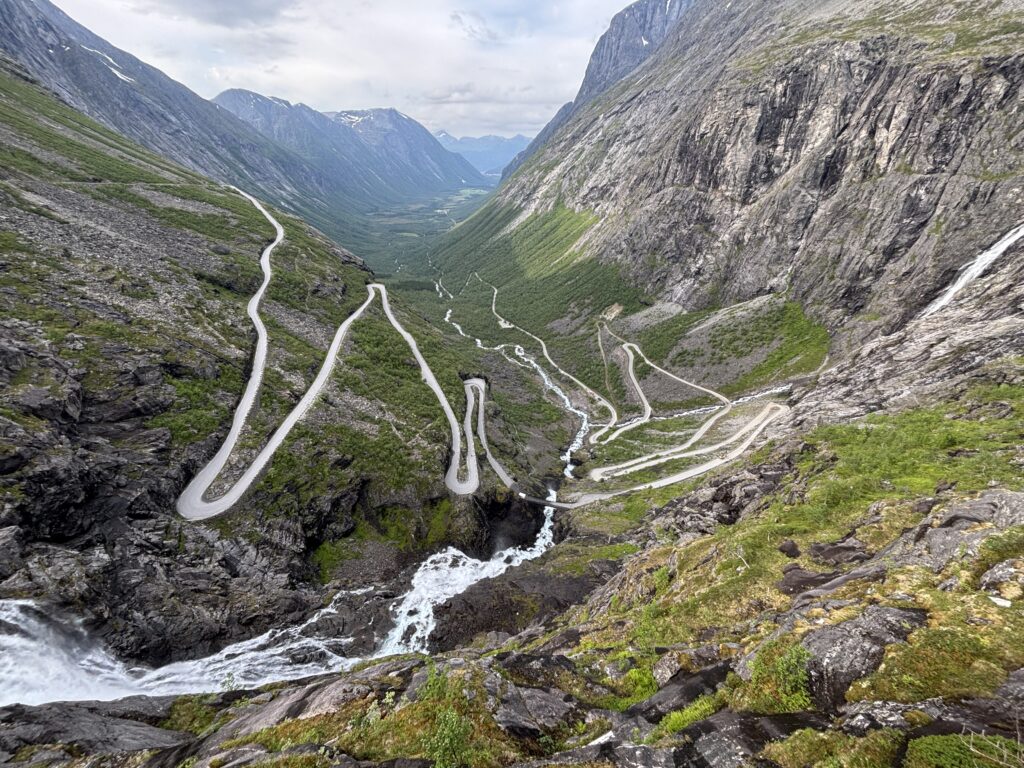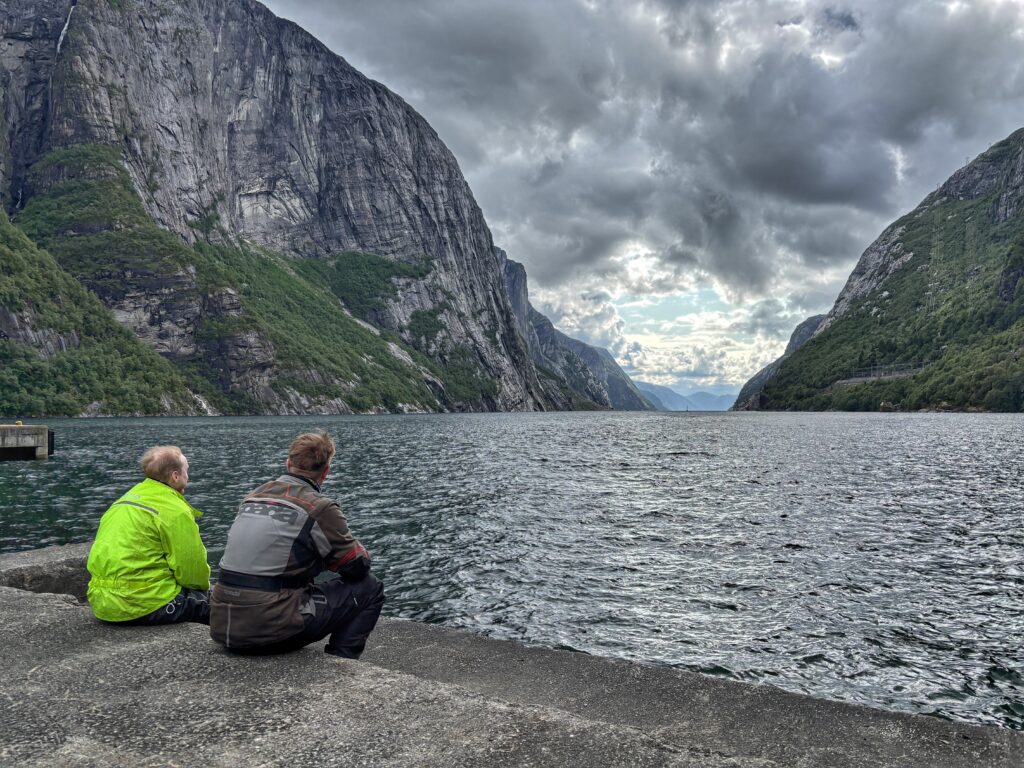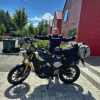Norway – so much more than Trollstigen
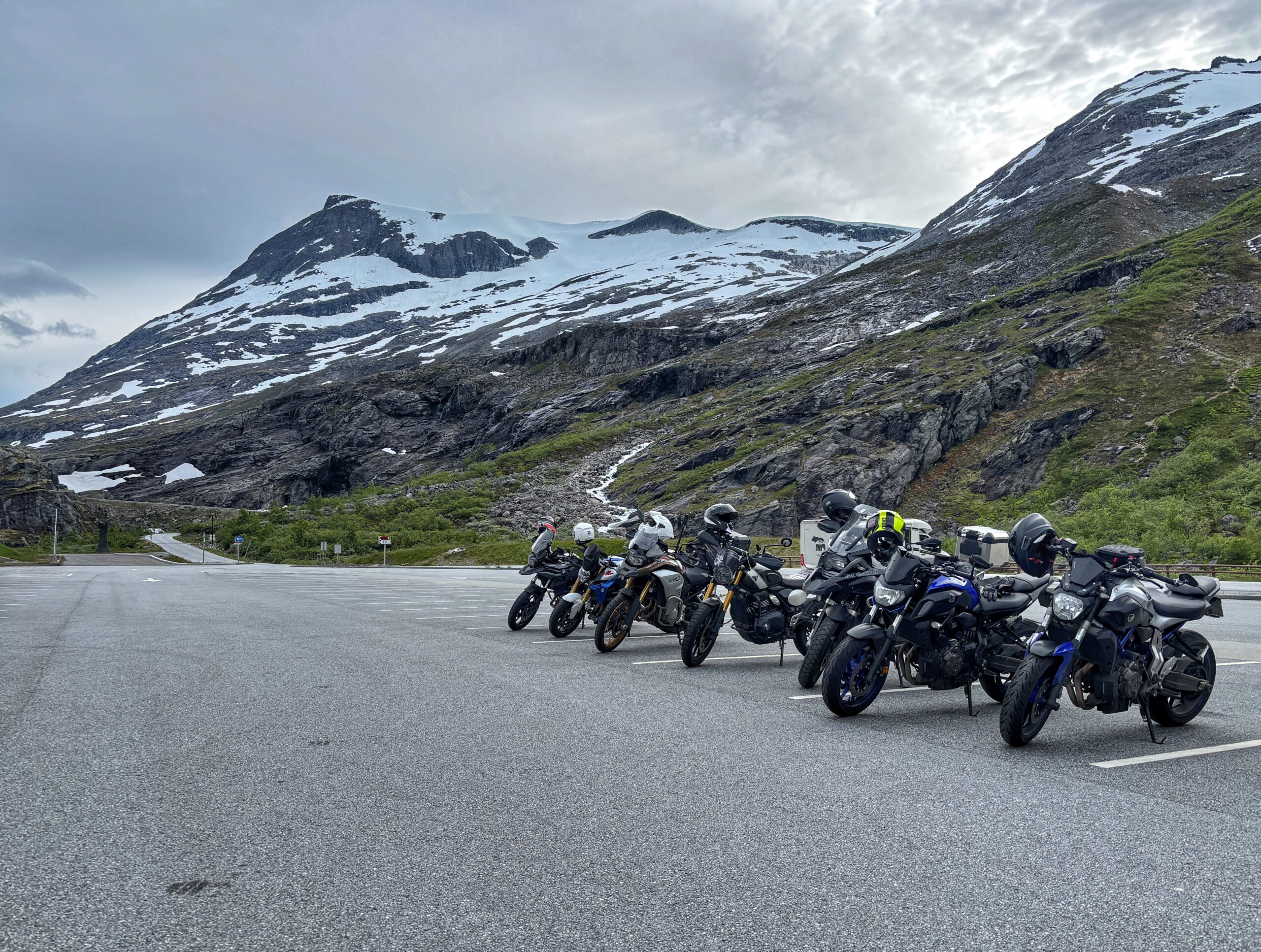
Riding through Norway is perhaps the most common first motorcycling holiday abroad for many Swedes. Ask around for destination tips and you’ll often hear names like Lofoten, the Atlantic Road, Geiranger, and Trollstigen. What to see and skip entirely depends on the type of trip you’re after. Riding distances always take longer in Norway than they would in Sweden – so you’ll need to ride at a solid pace to get it all in. And trust us, there’s plenty to experience.
What kind of survival strategy do you need for Norway?
Adventure motorcycling is somewhat of a gear sport, and it might take a few tries to find the perfect packing solution. Waterproof bags are essential. There are many styles and sizes to choose from. Drybags can be strapped down using tie-downs or you can buy bike-specific luggage – if available for your model. Universal bags also work well as long as they are stable and don’t interfere with wheels or exhaust pipes. It’s wise to test ride your bike with all your gear before the trip, so you get used to how it handles with the added weight.
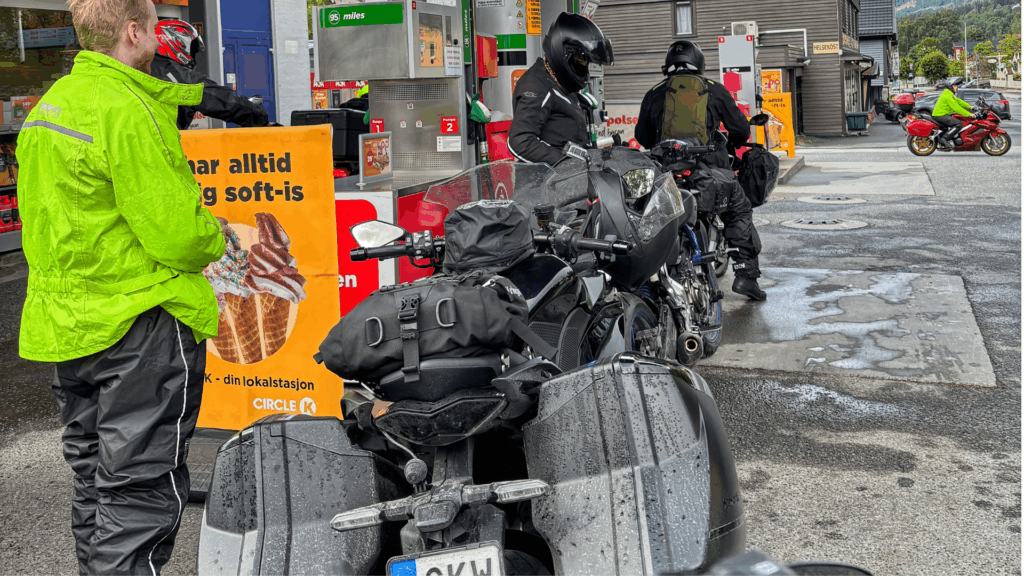
If you’re heading to Norway for the first time, the easiest option is to book cabins along the way and just ride the bike you already own. If you’re an experienced camper – bring a tent. But remember, Norway practically guarantees rain. Unless your gear can handle all-day downpours, cabins are a smarter choice. It won’t cost much if you split with friends. Even if your riding clothes don’t fully dry, a roof over your head does wonders for recovery. The key is to choose lodging that allows you to rest properly for the next day’s riding.
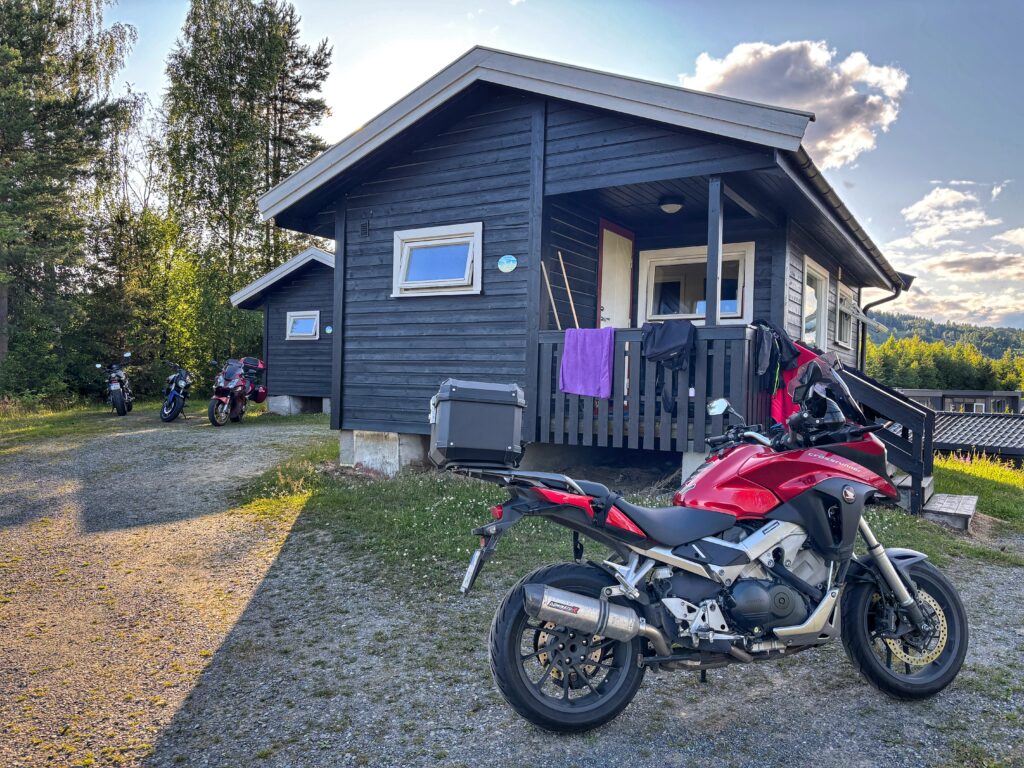
You’ll also need energy to keep going. Norwegian cuisine won’t blow you away, and expect a pizza to start at around 290 SEK – roadside diners can cost even more. The simplest solution is to bring food and eat along the way. Freeze-dried meals weigh the least, but you’ll need fresh water – either boiled in the morning or on a gas stove.
If you’re carrying soft cans (pre-made meals in foil bags), they can be heated in boiling water and don’t need fresh water – but they weigh around 400 grams each. Worst-case, they can be eaten cold. Between meals, pack snack bars to avoid energy crashes – they take up little space and can be bought before your trip in Sweden. Most fuel stations sell basics if there’s no supermarket nearby.
Your motorcycle needs to be ready too
It must be in good enough condition to handle around 3,000 km in one week.
- Check: tyres, brakes, chain/sprockets
- Bring: chain lube – you’ll need it
- If your bike is loud, insert a dB killer
- Hi-vis vest: Legally required in Norway for all drivers, including motorcyclists
- Don’t forget your registration documents
Norwegian roads
Packing, accommodation, food and a functional motorcycle – that’s really all you need. Riding in Norway isn’t more difficult than in Sweden. But do note that:
- Speed limits: 80 km/h outside urban areas, 50 km/h inside
- Roadworks: Always check ahead – Norwegians are constantly building or repairing roads
- Roads are very well maintained – even in the mountains
You won’t be able to just improvise your daily routes if you want to make the most of your days. You can be spontaneous, but if you want to see the best Norway has to offer, plan ahead.
Borrow proven routes from others or map out your own. A good rule: plan around your stops.
During peak holiday season, you’ll share the roads with RVs, buses and campervans. To avoid this: Travel before or after the tourist rush.
- If you want to ride a lot: aim for 300 km/day
- If you want time to stop, enjoy nature, take photos, lower your mileage goals
Ferries are a great way to get around Norway. Just register with FerryPay so charges are deducted automatically from your card. Some private roads require tolls – signs will explain what to pay and how. Follow the rules, or barriers may stay closed.
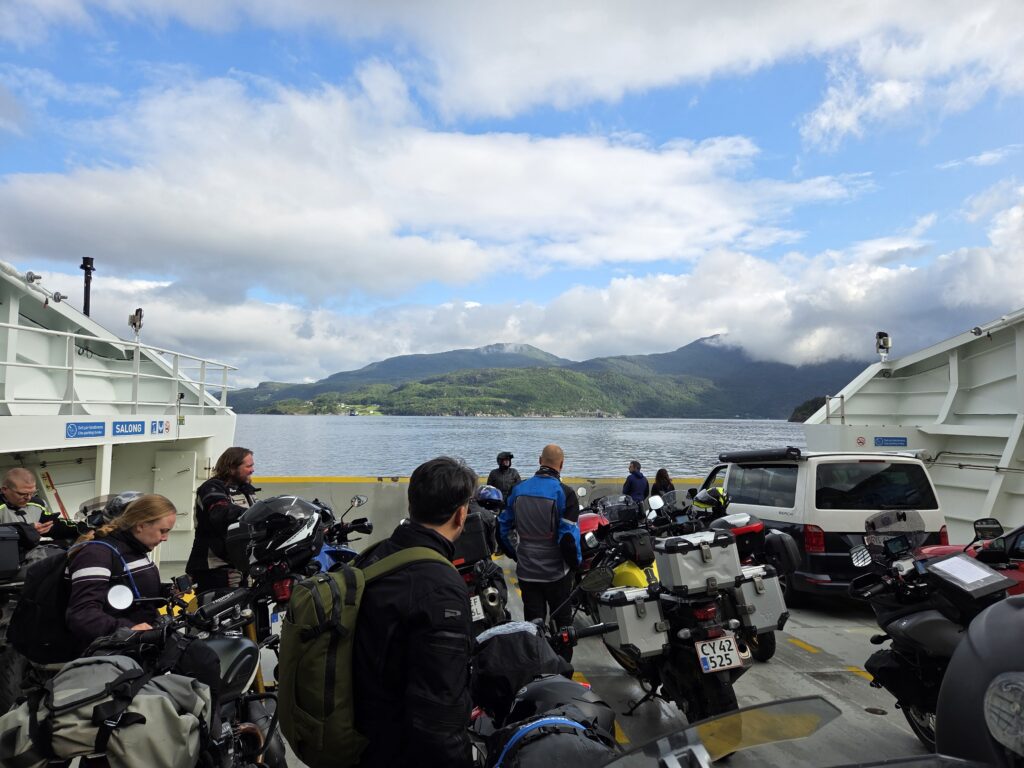
Where are we headed?
As you head inland, Norway offers snow-capped mountains, fjords, valleys, waterfalls, and tunnels. Watch out for the free-roaming sheep – they move, but take your time.
Good trip planning becomes crucial at this point.
Trollstigen – but not only Trollstigen
You’re likely planning to ride Trollstigen, especially now that it has reopened after being closed in 2024 due to landslide risk. It’s a classic. Nearly every motorcyclist talks about it, and it feels like a mandatory stop.
Yes, the view at the top is gorgeous, and you’ll see Stigfossen waterfall winding through the valley. But if it’s the twists and turns you’re chasing, know this:
Trollstigen has only 11 hairpin bend, compare that to Lysebotn, which has:
- 27 hairpins
- A unique corkscrew tunnel through the mountain
- And the incredible Lyseveien, a twisting road among peaks and water
Dalsnibba and Geiranger Skywalk
For more hairpins and breathtaking views, ride up to Dalsnibba.
- Toll fee: 180 NOK for motorcyclists
- At the top: Geiranger Skywalk – Europe’s highest fjord viewpoint
If the weather is clear, you’ll see the fjord, surrounding mountains, and the village of Geiranger far below.
From up there, you can trace the road down to Ørnevegen, which you’ll likely ride later.
It’s no wonder Geiranger and its viewpoint are part of UNESCO’s World Heritage List.
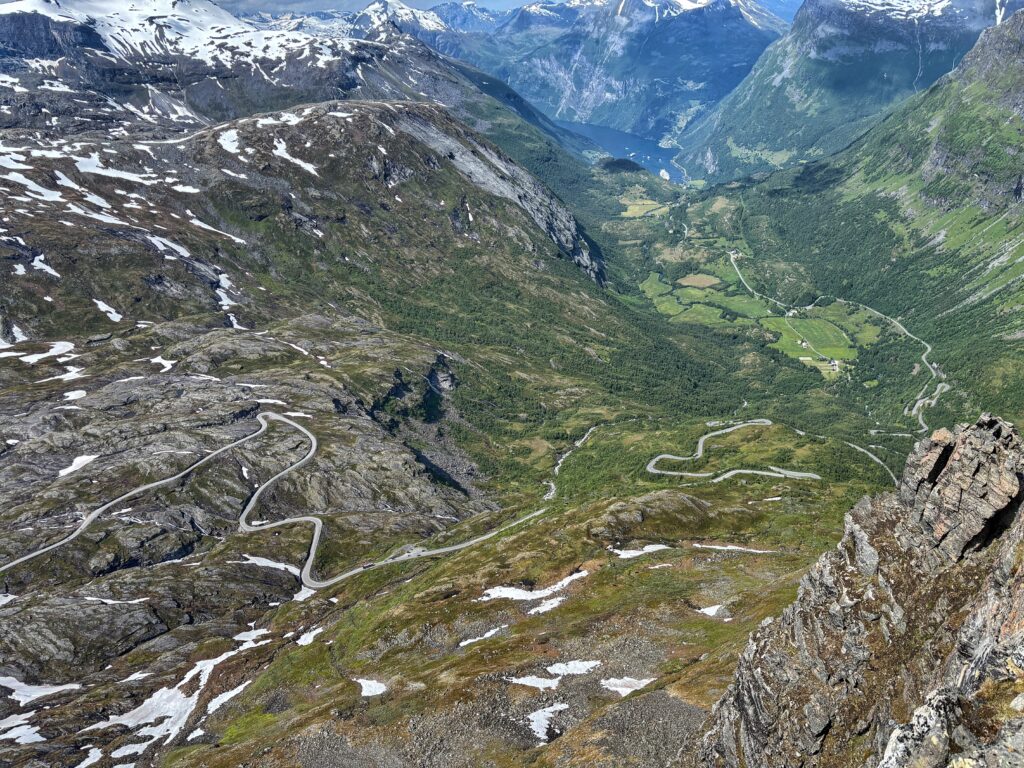
Don’t miss Sognefjellet
Make sure to ride the stunning Sognefjellet on Route 55 between Luster and Lom – the highest mountain pass in Northern Europe.
Highly recommended: Take Tindevegen up to Sognefjellsvegen from Øvre Årdal.
It’s usually quite cold up there, but it’s a magical feeling riding between snowy peaks.
If weather permits, stop at the many scenic lookouts and soak it all in.
- Highest point: 1,434 metres above sea level
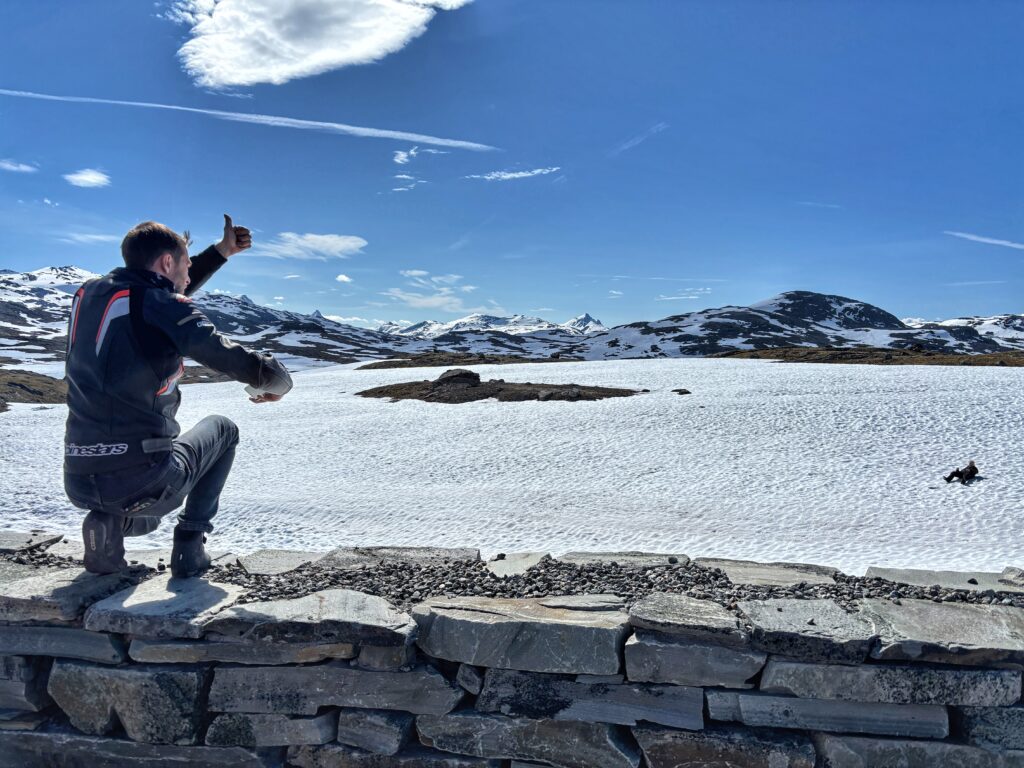
In conclusion
Norway is the perfect destination if you want a motorcycle adventure abroad but still feel safe and close to home.
No matter where you go, your trip will be filled with memorable experiences.
Just don’t forget to plan the stops you most want to see – and even if you don’t manage everything on one trip, the mountains will pull you back. Without a doubt.
Be ready for that!

